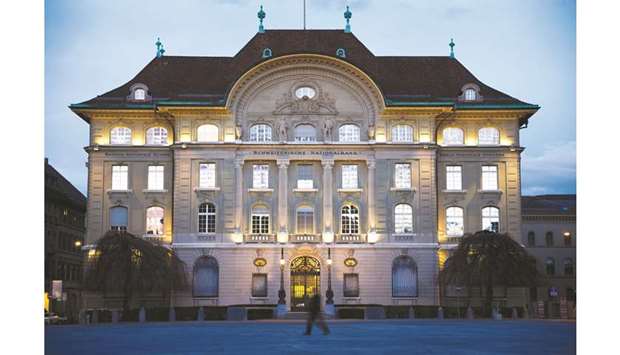Currency traders may have a green light to push the franc higher after the Swiss National Bank refrained from joining global central banks in easing policy.
The franc has led gains among major currencies since Swiss policymakers projected lower inflation and growth yet did not follow the European Central Bank and Federal Reserve in cutting interest rates. The SNB may be keeping its powder dry to deal with a further rally in the currency, given its rates are already at record lows.
The franc is among the currency world’s winners this year, touching a two-year high versus the euro this month, as a bleak European outlook, trade disputes and Brexit drive demand for havens. That’s bad news for the SNB as a strong franc hurts Switzerland’s exports. Further appreciation seems almost inevitable and curbing it might be beyond the central bank’s powers, analysts said.
“The SNB have had their fingers burnt before,” said Jane Foley, the head of currency research at Rabobank. “The biggest thing that would allow the Swiss franc to weaken would be an increase in the growth rate and risk appetite in the eurozone. Policy at the SNB, it’s like pushing on a string to some extent given this demand for safe havens.”
The franc has gained 3% this year versus the euro. It is trading around 1.09 per euro after nearly reaching 1.08 earlier this month, the strongest since mid-2017. The rally has spurred talk of what level could draw market intervention by the SNB, which says that the currency is highly valued.
In June the currency finally smashed through 1.12, previously seen by analysts as a potential line in the sand for the SNB, after bouncing off that level several times in the previous year.
Now market attention is turning to 1.08, with a recent increase in the bank’s so-called sight deposits suggesting it may have been active in defending that level, according to Toronto-Dominion Bank. The SNB did not immediately respond to Bloomberg queries on its policy.
“The SNB continue to flag their intervention capacity,” said Ned Rumpeltin, the European head of currency research at Toronto-Dominion. “They have revealed a preference to use that channel to defend against undue appreciation rather than policy rates.”
The SNB wasn’t alone in avoiding looser policy last week. Norges Bank hiked interest rates, while minutes from its Swedish counterpart’s policy meeting showed the Riksbank is keen to end negative interest rates – and the krona’s slide this year is giving it the flexibility to do so. That followed counterparts in Canada and Australia backing away from adding more stimulus.
“The policy community is being cautious here, which seems appropriate under the circumstances, as monetary ammunition is rapidly depleting,” Toronto-Dominion’s Rumpeltin said. “You either shoot first and try to get ahead of the curve or save it and wait until you see the whites of a recession’s eyes.”
Rabobank expects the franc to return to 1.08 per euro by the end of the year, while Toronto-Dominion forecasts a rally to 1.05 – a level last seen in 2015 following the SNB’s lifting of a cap on franc gains.
The Swiss central bank scrapped a ceiling of 1.20 per euro in January 2015 as it got too expensive, with hefty balance sheets, to limit the franc’s rally against a euro that was weakened by the ECB’s ultra-loose monetary policy.
The surprise decision saw the franc surge 30%, sent shock waves through markets and left the SNB’s credibility in doubt.
“Maybe given the difficulties that they had before they are being quite realistic that they probably cannot turn the Swiss franc around when risk appetite is low,” Rabobank’s Foley said.

The headquarters of the Swiss National Bank in Bern, Switzerland. Currency traders may have a green light to push the franc higher after the SNB refrained from joining global central banks in easing policy.


